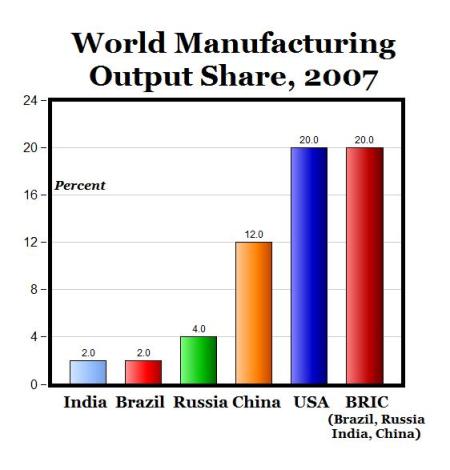I wanted to write a post about how manufacturing in North America is still a vital part of our, and the world’s, economy. While I was looking for facts and data, I came across this gem of a blog authored by Dr. Mark J. Perry, Professor of Finance and Business Economics at the School of Business, University of Michigan- Flint, on his blog Carpe Diem. He makes a great case.
Enjoy!

The chart above shows manufacturing output of selected countries and the BRIC countries, as a share of world manufacturing output in 2007, using United Nations data via the BLS (I haven’t been able yet to find comparable data for 2008). It’s interesting that U.S. factories produced almost twice as much output in 2007 as China, and the U.S. produced an amount equivalent to the total manufacturing output of the four BRIC countries combined (Brazil, Russia, India and China).
And as a Cato Study concluded in 2007, “Reports of the death of U.S. manufacturing have been greatly exaggerated.”
And as David Brooks wrote in 2008, “Instead of fleeing to Asia, U.S. manufacturing output is up over recent decades. As Thomas Duesterberg of Manufacturers Alliance/MAPI, a research firm, has pointed out, the U.S.’s share of global manufacturing output has actually increased slightly since 1980.”
According to the Federal Reserve data, the U.S. produced almost $3 trillion of industrial output in 2008, measured in 2000 dollars (or about $3.7 trillion in 2008 dollars). In other words, if the U.S. manufacturing sector had been counted as a separate country, it would have been tied with Germany as the world’s fourth largest economy, behind the U.S. (non-manufacturing), Japan, and China, and ahead of the entire economies of France, U.K., Italy and Russia (data here).
Bottom Line: The U.S. is still the world’s largest manufacturer.


